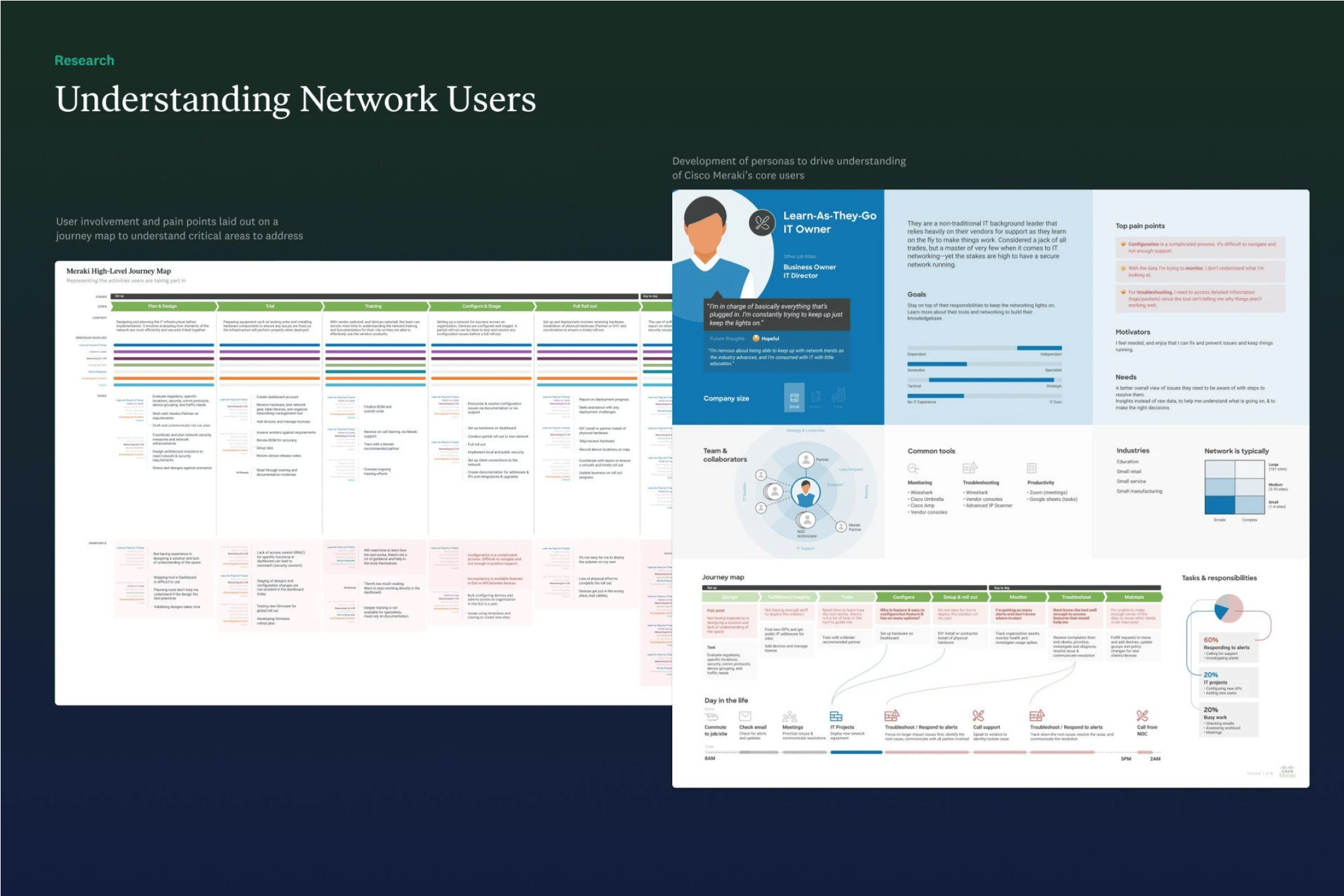A visiontype is an interactive prototype that shows an organization's vision looking forward 3-5 years. It helps turn the organization's goals into something tangible, focusing on how their customers' experience will improve.
A visiontype is a powerful tool for getting everyone in the organization on the same page and getting teams excited about working towards that future.
Why a Visiontype?
Makes the Vision Concrete
A good sketch is better than a long speech. (Napoleon Bonaparte)
Companies try to share their vision in different ways, with mixed results. The most common method is to use presentations. These slides can be good at showing why the vision matters for the company, but they often don't give enough details about what the product will actually be like or how it will help customers.
Some companies write 'Vision Documents,' imagining future press releases or pretending to design the product's packaging. Other companies have made complex 'Vision Videos' to share ideas within a big organization. We've also used storyboards, like Airbnb's Snow White project, to show the vision realistically.
But we often come back to using visiontypes because they hit the sweet spot in terms of being clear, affordable, and quick to make. Since a visiontype is a visual and interactive prototype, it minimizes the risk of people imagining different things, which often occurs when relying solely on written descriptions. Visiontypes are also detailed enough to force people to make decisions—you can't be vague or avoid making choices when you're creating a visiontype.
Brings the Organization Together
The best way to predict the future is to create it together. (Abraham Lincoln)
A visiontype can’t be created in a vacuum. While everyone doesn’t have to agree on every detail, it does need input from different parts of the company. The goal is to break down walls between departments and get everyone on the same page so they understand why the vision matters and how they can help make it a reality.
In our experience, it's important to have two types of input: a long-term view from leadership and a practical view from the people doing the day-to-day work. This helps us understand what's possible and what limitations we must consider when creating the vision.
Getting people from different teams to work together and agree on a vision can be the hardest part of creating a visiontype, but it's also the most important. When people feel involved and invested, they're more likely to ensure the visiontype becomes a real part of the company's future.

Compels Product/Platform Decisions
The essence of strategy is choosing what not to do. (Michael Porter)
The biggest advantage of turning your vision into a prototype is that it makes you decide what you will and won't do to give customers something valuable.
For example, AI is a trendy topic; many companies add it to their product visions. But when you have to show how your idea will benefit customers 3-5 years from now, you're forced to make tough choices about what that really means and how you'll deliver that value in your visiontype.
These choices give product teams a clearer direction. They'll have a better grasp of what an “AI-powered widget” actually does for customers, so they don't have to start from scratch. At the same time, they can still adjust their plans based on what's happening in the real world.
Redirects the Organization’s Trajectory
If you don't know where you are going, you'll end up someplace else. (Yogi Berra)
Agile is great for delivering regular updates to customers, but it can lead to small, gradual innovations rather than big leaps forward. Some of our clients have told us that their teams get stuck on the same path, even when they sense that things are changing around them, because they're so focused on the next two weeks.
A visiontype can act as a guiding star for the company. It helps them see where the product and the organization could be in the future, giving them the confidence to make bold moves. They can then work backwards from that vision to plan out how to make it happen, which is the first step in changing the company's direction.

Components of a great visiontype
Compelling customer narrative
Focus your energy on the key choices that influence revenue decision makers—that is, customers. (Roger Martin)
A visiontype shows your company's goals, but the main focus should be on your customers and how their lives will be better in the future. The visiontype should tell a short, powerful story about your customers that smoothly connects different types of customers and users.</p><p>It might be tempting to cover every possible situation and include every detail, but we've found that it's better to focus on a few important scenarios. This is especially true if these scenarios solve customer problems mentioned in interviews. This helps keep your audience's attention, since people can only remember so much at once.
Showcases Big Ideas
A designer knows he has achieved perfection not when there is nothing left to add, but when there is nothing left to take away.(Antoine de Saint-Exupéry)
Visiontypes have a clear and unique perspective. They use broad themes supported by connected big ideas throughout the prototype. These ideas help bring the vision to life for the audience, so they can easily understand how it benefits the customer.
The visiontype is a starting point, not the final product. Since we mainly design software, we focus on using the best interfaces and interactions to connect and communicate the big ideas. The goal is to make the vision clear, rather than worrying about how easy the prototype is to use. Teams have the next 3-5 years to work out those details.

Lives in the Future
The future is already here. It’s just not evenly distributed. (William Gibson)
Since the visiontype is set in the future, we must ensure that the vision we create today considers the world it will exist in 3-5 years. We can glimpse that future by looking at the edges of what's happening today and identifying trends and signs that point to new patterns. This could involve talking to customers who have pushed your product to its limits or looking at innovative startups in your industry exploring new possibilities.
The aim isn't to be futuristic just for the sake of it, but to consider these potential future realities. In fact, it's more important for the future shown in the visiontype to be realistic, so that the audience can imagine themselves in that future instead of getting sidetracked by unnecessary details or finding it hard to believe.
Experiential and Emotional
People will forget what you said, people will forget what you did, but people will never forget how you made them feel. (Maya Angelou)
Since the visiontype is a powerful way to share ideas, it should also be fun, inspiring, and engaging for your audience. They'll be spending the next 3-5 years turning it into reality, so if you've done a good job, it will be a challenge they're excited to take on.
When people experience the visiontype, it should draw them into your customer's future world and take them through the highs and lows of the customer's journey. You can make it interactive, so the audience clicks on the prototype at important points in the story, just like a customer would. Or, you can use a video to create a more hands-off but intense experience that highlights the story and emotions of your customers. The choice depends on the size of your company.

Conclusion
As you embark on your own journey to create a visiontype, remember that it is not just about creating a prototype; it is about bringing your organization together, making tough decisions, and having the courage to pursue a bold vision for the future. By investing in creating a visiontype, you are investing in the long-term success of your organization and the impact you can make on your customers' lives.



